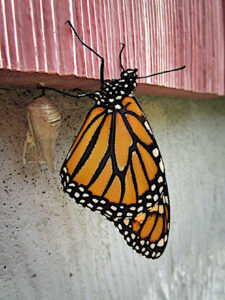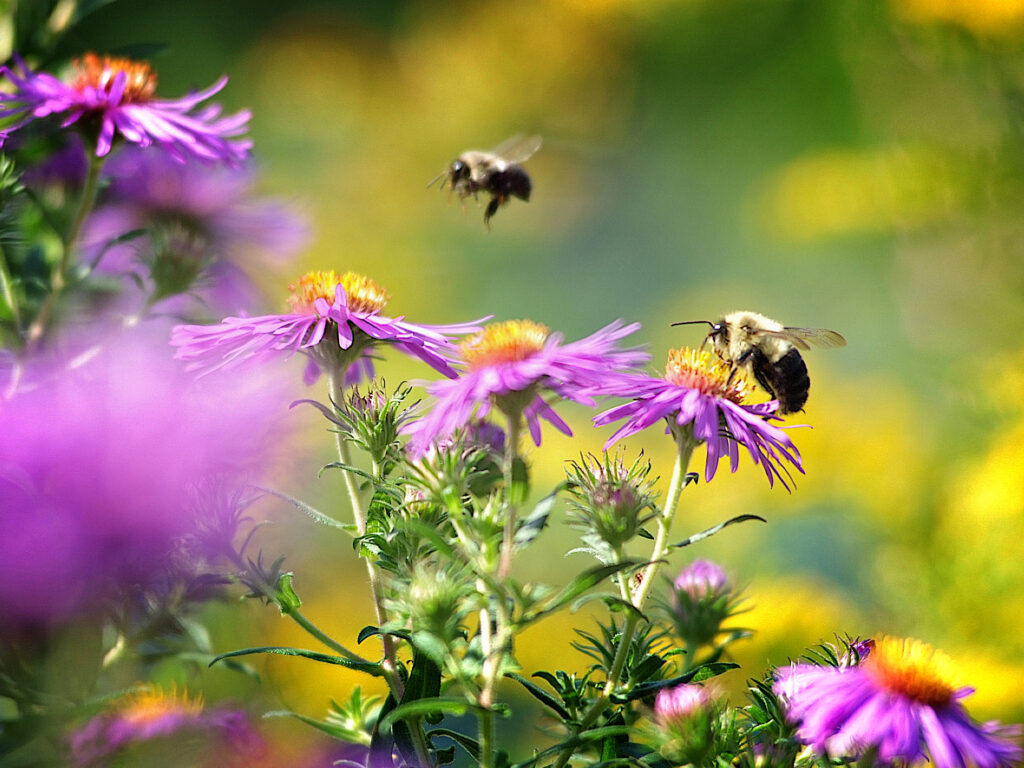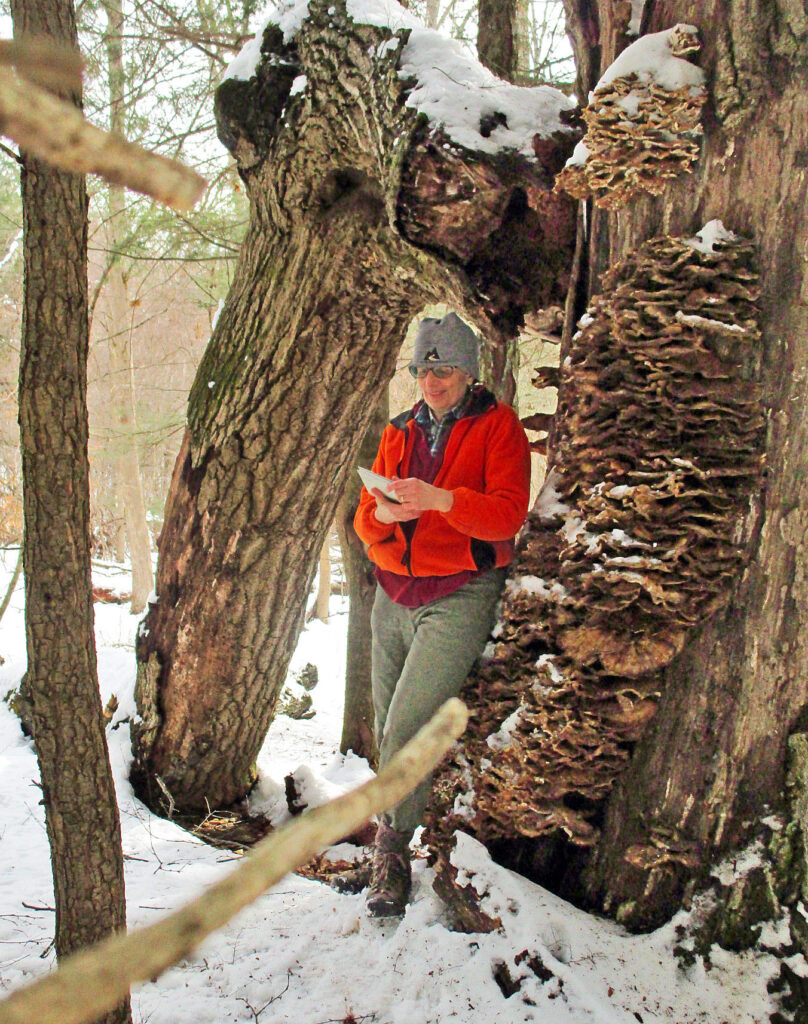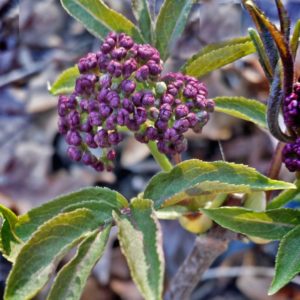Category Archives: Native Plants
TOUGH NATIVE PLANTS FOR ROUGH SEASIDE CONDITIONS – ROCKPORT, MA
Want beautiful, tough plants in your garden?
Carol visited Rockport, MA recently and shows us two tough-as-nails native plants for your garden that also provide habitat for wildlife.
MONARCHS BUTTERFLIES ON THE HOUSE?
IF YOU WANT MONARCHS, PLANT NATIVE MILKWEEDS

Anchored by the chrysalis from which she emerged, a female monarch butterfly clings to the side of my home during the eclosure process of metamorphasis. The chrysalis was formed by a monarch caterpillar who chose a protected spot where the foundation meets the shingles. My home is a National Wildlife Federation Certified Wildlife Habitat in North Easton, MA that has both native butterfly weed (Asclepias tuberosa) and swamp milkweed (Asclepias incarnate). Milkweeds are essential to monarchs, as female monarchs lay their eggs only on milkweed plants. If you want monarchs at your home, milkweeds are not too fussy – and you can start attracting butterflies with just a couple of plants.
Powerful pollinator magnets – design with native perennials for fall bloom

Native asters and goldenrod attract native bees at Foxborough Conservation Commission’s Lane Learning Center
Plant Goldenrods and Asters to Support Pollinators in Late Summer
According to the National Wildlife Federation, native asters like New England (Aster novae-angliae), New York (Symphyotrichum novi-belgii), smooth (Aster laevis), white wood (Aster divaricatus) and other woodland asters support the entire life cycles of over 110 species of butterflies and moths, so it you want a pollinator garden, these are must-haves. And the good news is that it’s ragweed rather then goldenrod that causes so many allergies in late summer, so plant away!
Goldenrods such as zig-zag (Solidago flexicaulis), showy (Solidago speciosa), seaside (Solidago sempervirens), and anise-scented (Solidago odora) species are the top champions of supporting the entire life cycles of butterflies and moths in New England, supporting 110 species in eastern MA.
More good news is that there are asters and goldenrods that do well in shady and dry conditions, so don’t worry if you’ve not much sun – so get out there and help pollinators by planting the plants they depend upon for their very existence.
What plants are best for native bees?
Obviously they like goldenrods and asters as pictured above, but even better are native roses, like Carolina (Rosa caroliniana), Virginia (Rosa virginiana), swamp rose (Rosa palustris) and shining (Rosa nitida), plus flowering raspberry (Rubus odorous). As always, before purchasing plants, know your site’s cultural conditions – like sun/shade, soil texture and drainage – and select the best species for your conditions so your investment has the best chance of thriving.
Birds and other animals will thank you for providing habit – like food, shelter and nesting sites – that looks so satisfying to you!
My Favorite Things – Harper, Goldenrod and Rockport, MA

My favorite things include my pup, Harper, native seaside goldenrod for pollinators, and Rockport, MA, shown here at the park above Old Garden Beach in Rockport. Sorry, Harper, the goldenrod is in focus and your are a prop. Good boy!
Join me in attracting butterflies, birds and native bees to your garden:
Top 5 reasons to include goldenrod in your butterfly garden:
- 125 species of butterflies and moths lay their eggs on goldenrod in eastern MA, more than any other herbaceous perennial, and if you want to have butterflies, you must welcome their caterpillars and provide them something very specific to eat as soon as their eggs hatch. The female adult butterflies lay their eggs on the plants that they know will feed their young.
- Many people think native plants like goldenrod will take over a garden, but some species of goldenrod are well-behaved clumping varieties that do not spread into colonies.
- Adult butterflies depend on nectar from late summer and fall blooming plants to provide nectar for food, and goldenrods are nectar-rich and have a long bloom period. This includes migrating species like the popular monarch, Danaus plexippus, in the Nymphalidae family.
- Native bees also need pollen for food, and goldenrods are an ideal source late in the growing season.
- The more caterpillars and adult butterflies you have, the more birds you’ll have, and the more diverse will be the wildlife in your garden.
- BONUS: Ragweed, rather than goldenrod, is the major culprit of seasonal fall allergies. Ragweed is wind-pollinated, and plants that are wind-pollinated make way more pollen than animal-pollinated plants. Butterflies, moths, bees, and birds are some of the animals that pollinate plants.
Thank you for reading this, and happy habitat gardening!
Turn Your Lawn in Pollinator Gardens and Wildlife Habitat
Check out our progress on the turf-to-habitat project in Seekonk, MA, like it if you like it and subscribe it you want to know more about native plant design and consulting in SE MA.
GOT SPRING FEVER? HELP POLLINATORS THIS YEAR!
Pollinate New England Program in Wellesley Shows You How to Plan and Plant a Pollinator Garden
The Wellesley Natural Resources Commission hosted a live Pollinate New England program (pre-Covid) on the importance of using native plants to support New England’s bees, insects and other pollinators. Watch this video of the program to learn the actual steps of creating a pollinator habitat garden.
Learn how to design and create a pollinator garden
You’ll learn how to attract native butterflies and moths, birds and bees to your garden and
- put the right native plants in the right places
- design the spacing of your plants to maximize their potential, have good looks and reduce weeds
- get your pollinator plants established with organic gardening practices, proper watering and care
- use ecological mulching materials and learn their benefits, such as retaining soil moisture, moderating soil temperature, and reducing weeds
The goal of Pollinate New England is to teach and encourage homeowners to plant diverse, systemic pesticide-free native plants that support a wide variety of pollinators throughout their life cycles. It’s an initiate of the Native Plant Trust (formerly New England Wild Flower Society), which received an IMLS grant to create a network of pollinator gardens, collaborating with twelve partners throughout six states, supported by a suite of in-person and distance programs and resources.
Sharpen the Saw at the 27th Ecological Landscape Alliance Conference & Eco-Marketplace: March 3-4
What to do for your habitat and pollinator gardens this winter? It’s learning season!

Garden-911 Boston owner Carol Lundeen learns to estimate the age of an old growth northern red oak tree. Since the actual age of trees cannot be determined without cutting the trunk and counting its individual growth rings – or by using a core boring tool – she instead used her outstretched arms as a measuring tape to estimate its circumference, which was more than three times her reach. Dividing the circumference by pi (approx 3.14), she arrived at the DBH (diameter at breast height). Using an arborist multiplication factor specific to northern red oaks, she estimated that this Quercus rubra lived for about 265 years old before its growth potential, environmental and cultural factors brought on its demise – though it’s now continuing the cycle of life by being home to walls of fungi, birds, insects and other wildlife.
Nothing like having something inspiring to look forward to during a pandemic – like learning! The Ecological Landscape Alliance’s 27th Conference and Eco-Marketplace lights up my calendar on March 3-4 and I can’t wait to sample the design, climate change/resilience and inclusion tracks. Below are the top ten talks I’ve circled so far. For more info, visit https://www.ecolandscaping.org – I hope to see you there!
Learn about top new trends in native plant and pollinator gardens, design and consulting:
- Toby Wolf, Wolf Landscape Architecture: “Sharing the Adventure: Design Communications for Ecological Landscapes”
- Gerdo Aquino, SWA Group: “The Aesthetics of Ecology and Why Design Matters”
- Nadia Malarkey, Nadia Malarkey Design: “Regenerating Suburbia One Garden at a Time”
- Lisa Hayden, New England Forestry Foundation: “Engaging Landowners in Sustainable Stewardship”
- Leah Penniman, Soul Fire FarmFarming While Black: “African ” Wisdom for Farming and Food Justice”
- Ryan Serrano, Earth Steward Ecology Inc: “Regenerative Landscape Essentials: Tethering Function and Aesthetic
- Pamela Conrad, CMG Landscape ArchitectureClimate Positive Design – Going Beyond Neutral
- Dan Jaffe Wilder, Norcross Wildlife Sanctuary: “Taking on the Big Places: How to Build and Maintain Self-Sufficient Landscapes”
- Thursday’s Luncheon Discussion: “Diversity, Equity, and Inclusion in Horticulture”
- Anna Fialkoff, Wild Seed Project: “Rewild in 10 Action Steps
About the ELA (Ecological Landscape Alliance)
Here’s the scoop on the ELA, of which I’m a member, quoted from the ELA website:
“Since its founding in 1992, the Ecological Landscape Alliance has been a leader in promoting sustainable approaches to landscape design, construction, and management. ELA’s commitment to innovative ideas and evidence-based practices has made the organization both a trusted resource and a vibrant community of landscape professionals and devoted gardeners.
Our Mission
The Ecological Landscape Alliance advocates for ecological landscape practices through education, collaboration, and outreach.
Our Vision
Everyone who interacts with the land is a steward whose actions are informed by an understanding of and respect for natural systems.”
For more info visit https://www.ecolandscaping.org
Thankful for trees, nooks and crannies this holiday season
Nice sticky snow clings to colorful leaves of a native red maple tree, Acer rubrum, in a Sharon, MA garden. In landscape design, red maples work hard as structural elements, framing other features of the garden. As habitat, they’re provide shelter, food, and nesting nooks and crannies for wildlife.
I am so thankful for our native trees, like this red maple in a Sharon, MA garden. Like most natives, they provide vivid horticultural value in color, form, and texture; provide habitat for wildlife; and intercept and absorb storm water to help mitigate flooding. Every square foot in your garden, and every plant matters.
RESPECT YOUR ELDERS!

Native red elderberry plant, Sambucus racemosa, showing off its flower buds in the Garden-911 display garden in North Easton, MA. WARNING: Red elderberry fruit, leaves, stems, flowers, roots and other tissue are known to be toxic when taken internally without sufficient preparation. Carol Lundeen and Garden-911 assume no liability if you choose to eat or allow others to eat any part of the plant.
Walking the Garden-911 display garden today, these red elderberry flower buds caught my eye. With the color of deep purple lilacs, these native Sambucus racemosa flower buds, combined with their emerging compound leaves, put a smile on my face and took my mind off everything for a few minutes. Gardens, especially native plant gardens, have long been known to be restorative. If you’re staying at home to ride out the coronavirus, it may be a great time to pause to enjoy spring emerging in your landscape – even if it’s just weeds emerging in last year’s containers, or up through the cracks in a sidewalk.
DESIGN AND CULTIVATION When designing with elderberry, keep in mind that they prefer, and will spread and fruit most robustly, in a sunny exposure. Red elderberry is found on a wide variety of soils but favors deeper, loamy sands and silts and nutrient rich sites with good drainage, ample moisture and a pH of 5.0 to 8.0. It’s best to plant at least two genetically diverse individuals. Before you purchase a plant, always inquire as to how it was grown. Even though you’re purchasing a native plant, it may have been grown in a conventional nursery that uses conventional propagation methods like vegetative cloning, where all plants are genetically identical. It’s best to find a nursery that sells sustainably grown specimens. Grow Native Massachusetts has a terrific resource list of nurseries they recommend.
The dense roots and rhizomes of red elderberry make it useful for soil stabilization and erosion control on moist sites including streambanks. It provides fair to good food and cover for birds plus small and large mammals. Hummingbirds collect nectar from the flowers. The fruit is high in ascorbic acid. Stems, bark, leaves and roots contain cyanide-producing toxins but berries may be consumed as jelly or wine after cooking. This versatile plant can also be used to make dye, insecticide, medicine, and musical instruments. The colorful fruit attracts birds and several cultivars have been developed for ornamental applications.
NATIVE PLANT GEEK INFO Other scientific names include Sambucus callicarpa, Sambucus microbotrys, Sambucus pubens, Sambucus pubens. var. arborescens, Sambucus racemosa var. racemosa, Sambucus racemosa ssp. pubens and Sambucus racemosa var. pubens. Alternate common names include scarlet elder, stinking elderberry, stinking elder, red-berried elder, bunchberry elder, and red elder.

